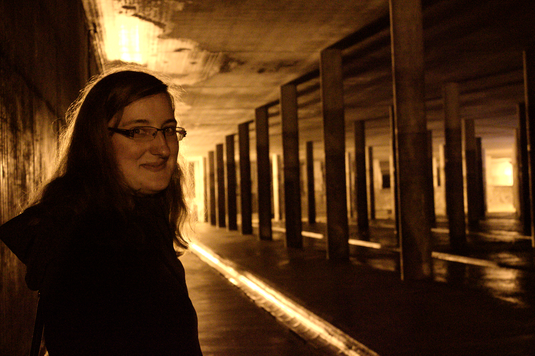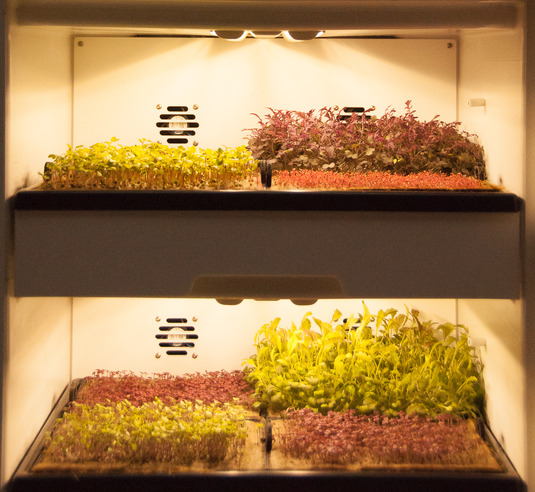Ecopolis Munich Exhibition/Munich from Below
What Happens Underground?
18.09.2017
This project by Lisa Bauer and Sonja Meinelt, students of the RCC-LMU Environmental Studies Certificate Program, stems from research conducted as part of the exhibition project “Ecopolis: Understanding and Imagining Munich’s Environments.”

Munich's rainwater retention basin below the Hirschgarten. Photo Credit: Luna Benitez Requena.
An underground world lurks
beneath the pavements, houses, and streets of Munich.
Mysterious, dark, dirty—
these are the common associations with what lies below ground.
But there is so much more to subterranean Munich
that we don’t know about!
Out of sight and unknown to most locals, streams—which were channeled in the
nineteenth and twentieth centuries—flow underground.
Munich could not exist without its underground world—
the city’s lifelines run under these crowded streets.
Sewage is cleaned here
and the residents are supplied with drinking water.
Munich is the German metropolis with the highest
precipitation level (960 mm per year).
When a heavy rainfall fills the sewers, water is
then collected in 13 enormous rainwater retention and overflow basins.
Underground Munich was also important for beer,
which was once cooled with ice in storage cellars.
Today it is cooled differently,
but the underground space offers new opportunities for our future.
Will we soon eat food that is grown underground?
Munich’s underground is filled with secrets and potential:
let’s bring light into the darkness!
Mushrooms under Goetheplatz
As early as after the Second World War,
mushrooms were grown underground
in an old rail tunnel beneath Goetheplatz.
Built as a section of Munich’s first subway,
today the U3/6 line runs through the “mushroom tunnel.”
The city had already begun to plan a subway in 1905,
but the realization of the project was discarded and revisited several times.
The project was revived in the Nazi era.
Construction work began in 1938 on Lindwurmstraße.
However, after only 600 meters, tunnel construction was stopped.

Not only mushrooms are able to survive without daylight. Photo Credit: Florin Pruna.

